
The Frafra Tapestry
Press Release StoreAlvaro Catalán de Ocón states, "As a designer, I find it hard to justify an aesthetic decision; however, the Frafra Tapestry is based on an architectural plan interpreted by the artisans."
The Frafra Tapestry emerges from a prolonged research process. Each piece translates the architectural plan of a specific Frafra family compound, interpreted by local artisans by means of elephant grass. These are objective documents that precisely represent a construction tradition feared to disappear.
The traditional dense weaving extends in circles and lines that articulate the daily life of a family. Its growth is reflected in rooms, courtyards, and walls, captured in the tapestry as a poetic architectural plan.
The bicolor language articulates a compelling aesthetic message intended for contemplation in these large-format pieces.
In the 1970s, Italian conceptual artist Alighero Boetti created the Map series, where a group of Afghan women wove multiple versions of a political world map. Boetti merely sent them the maps and country flags. The embroiderers interpreted the shapes and spaces through the aesthetic language of their tradition.
Like Boetti, Alvaro Catalán de Ocón does not impose a predefined project on his local partners. Returning to Ghana in 2022, the conversation resumed, stemming from the idea of an expansive lamp.
As Boetti said, dialogue involves chance. Each interaction triggers a dialectical impulse that sometimes leads to unexpected places. Thus, the concept of interconnected circles displayed by the Ramingining PET Lamp led to the Frafra family compounds.
These traditional buildings represent the local residential architectural model of Gurunsi. Built from adobe and wood, they house a family unit in circular structures, organically expanding as the family grows.
In Tongo Hills, a few kilometers from Bolgatanga, lives a priest of the animist religion. This area is home to numerous shrines forming the spiritual core of Gurunsi. This factor has been essential in preserving ancestral construction techniques.
The journey from abstract to concrete manifested itself in the priest's home through conversations and absorbing the family compounds and their significance. The architecture told the story of a family. What was left was just to weave it.


- Drone view of a traditional building called Frafra family compound in northern Ghana.

- Each plan of the Frafra family compound, reflected in rooms, courtyards, and walls, were drawn up using AutoCAD.
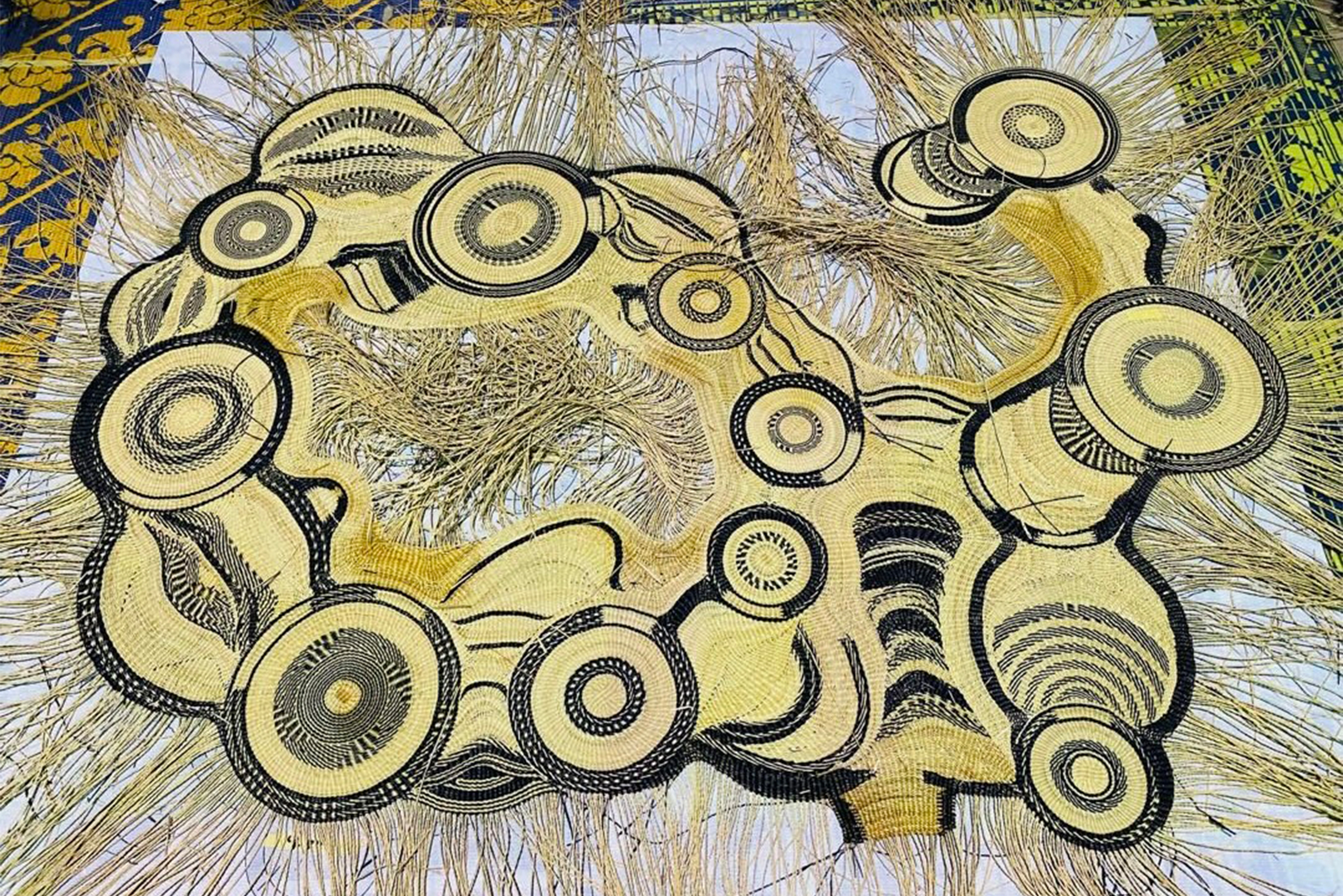
- Each piece of Frafra Tapestry translates the architectural plan of a specific Frafra family compound, interpreted by local weavers by means of Elephant grass.
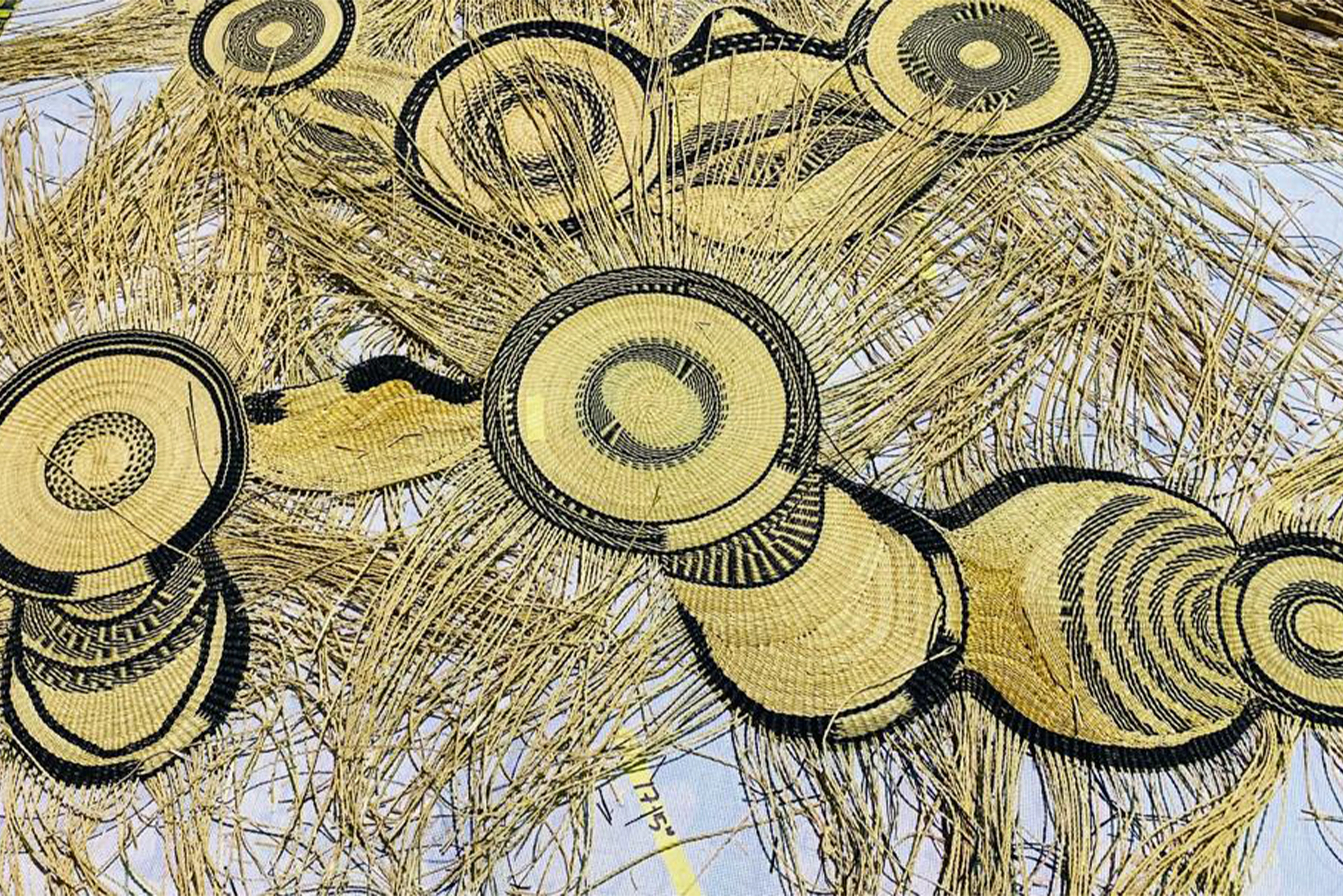
- The bicolor language of Frafra Tapestry articulates a compelling aesthetic message intended for contemplation in these large-format pieces.
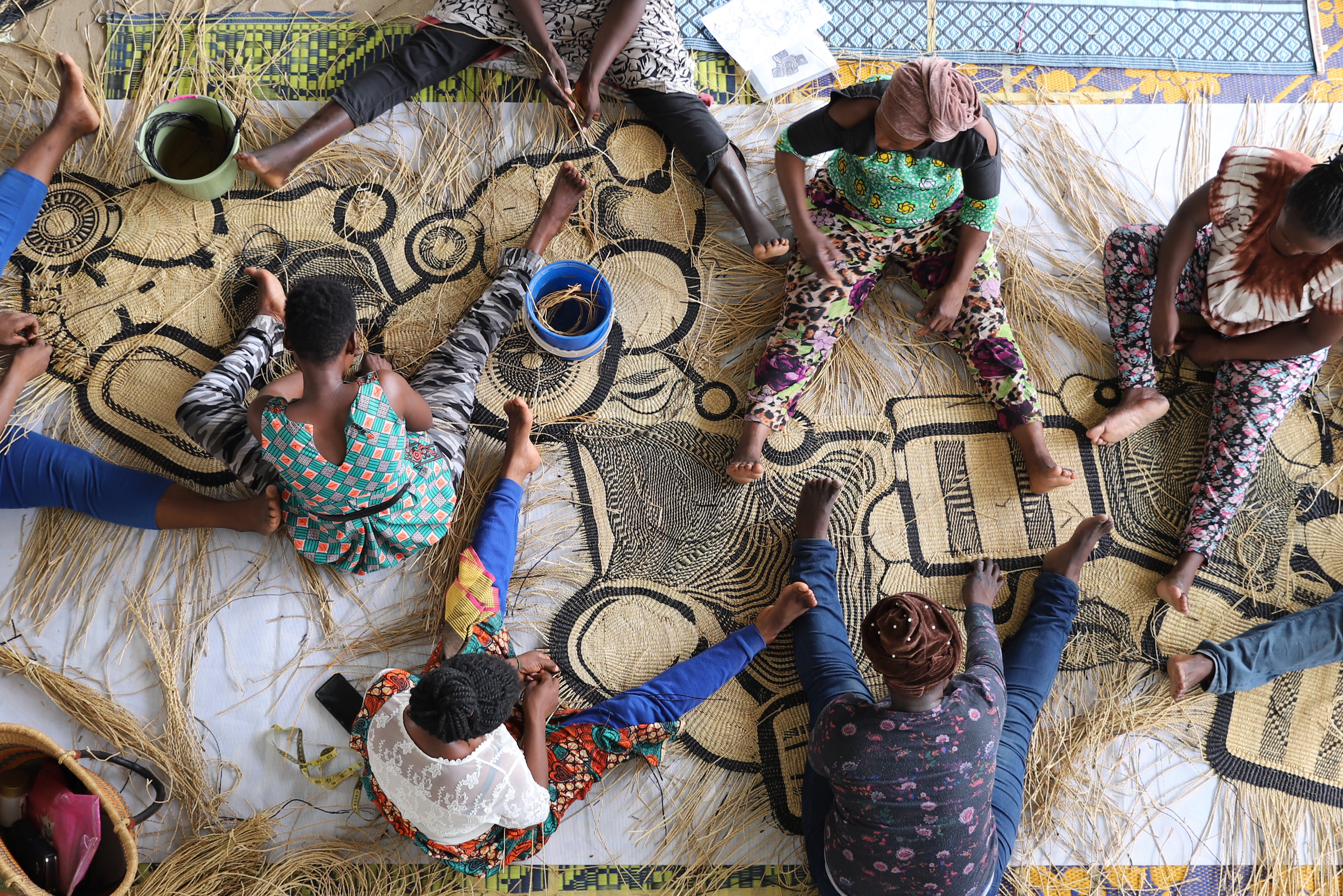
- Bolgatanga weavers applied basketry techniques using Elephant grass in the tapestry's creation. This flexible and versatile fiber traced little by little the interconnected circles of the plan in a bicolor pattern.
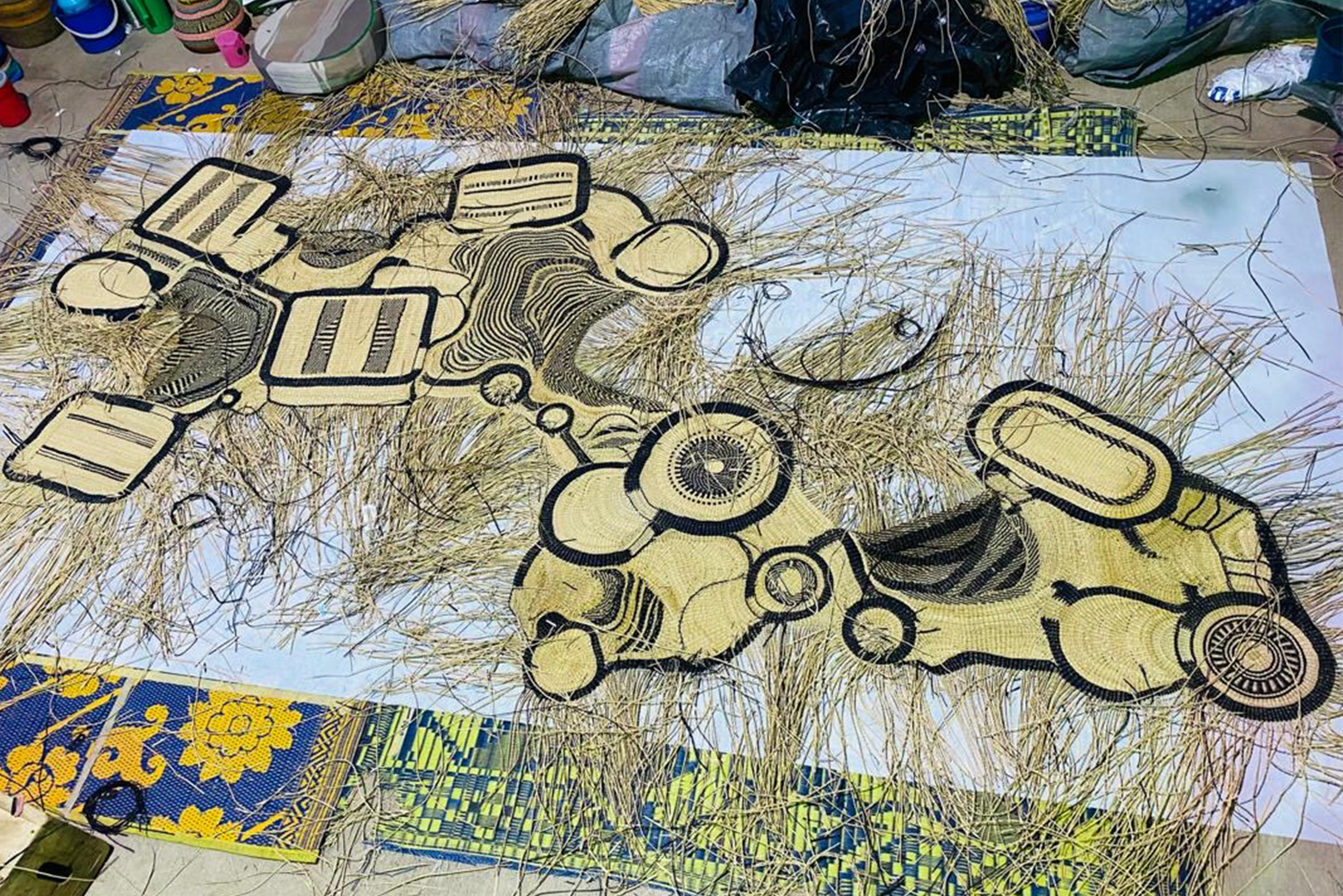
- The Elephant grass is a flexible and versatile fiber traced little by little from the interconnected circles of the plan in a bicolor pattern.
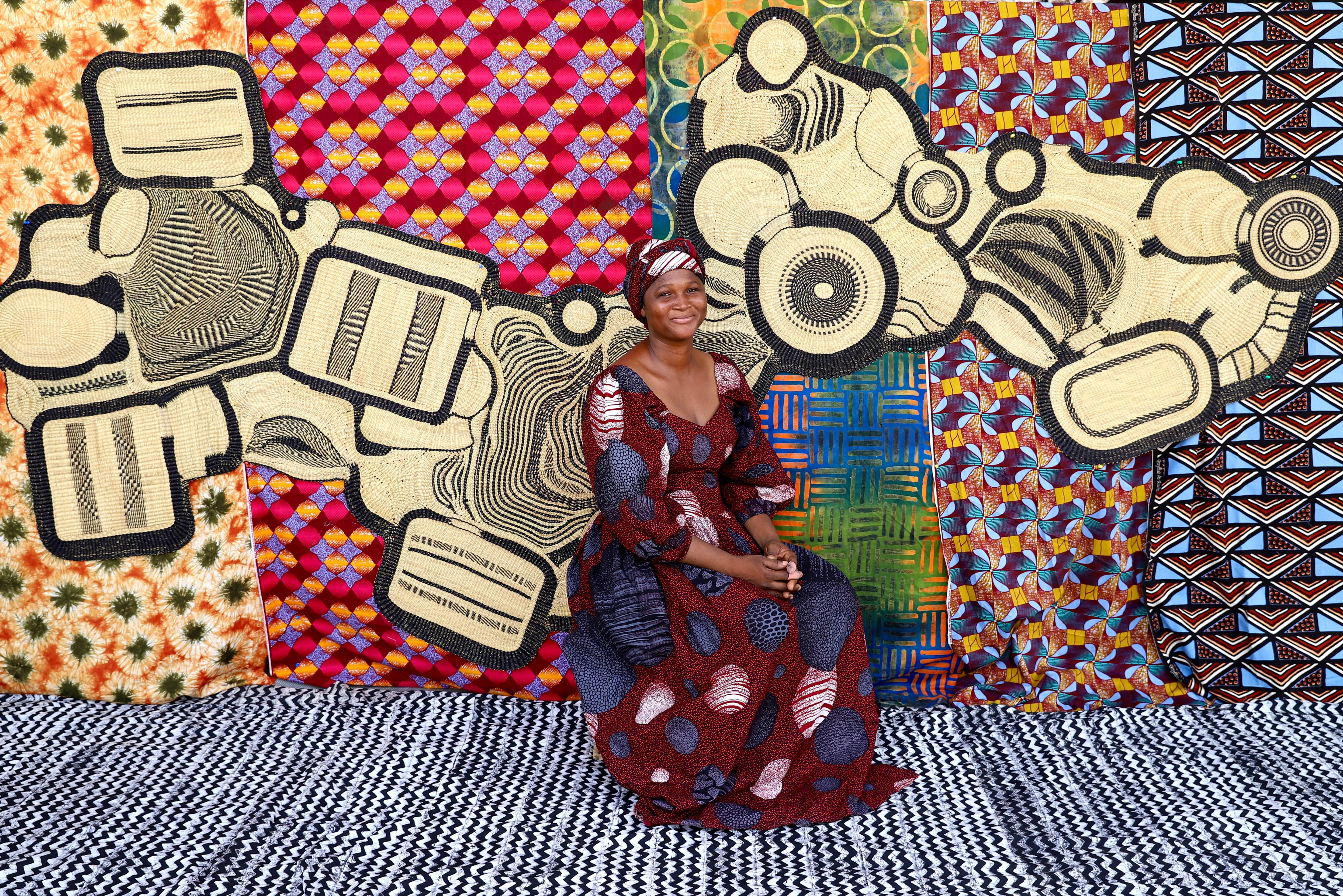
- Mary Ayinbogra, weaver of Baba Tree Basket Company.
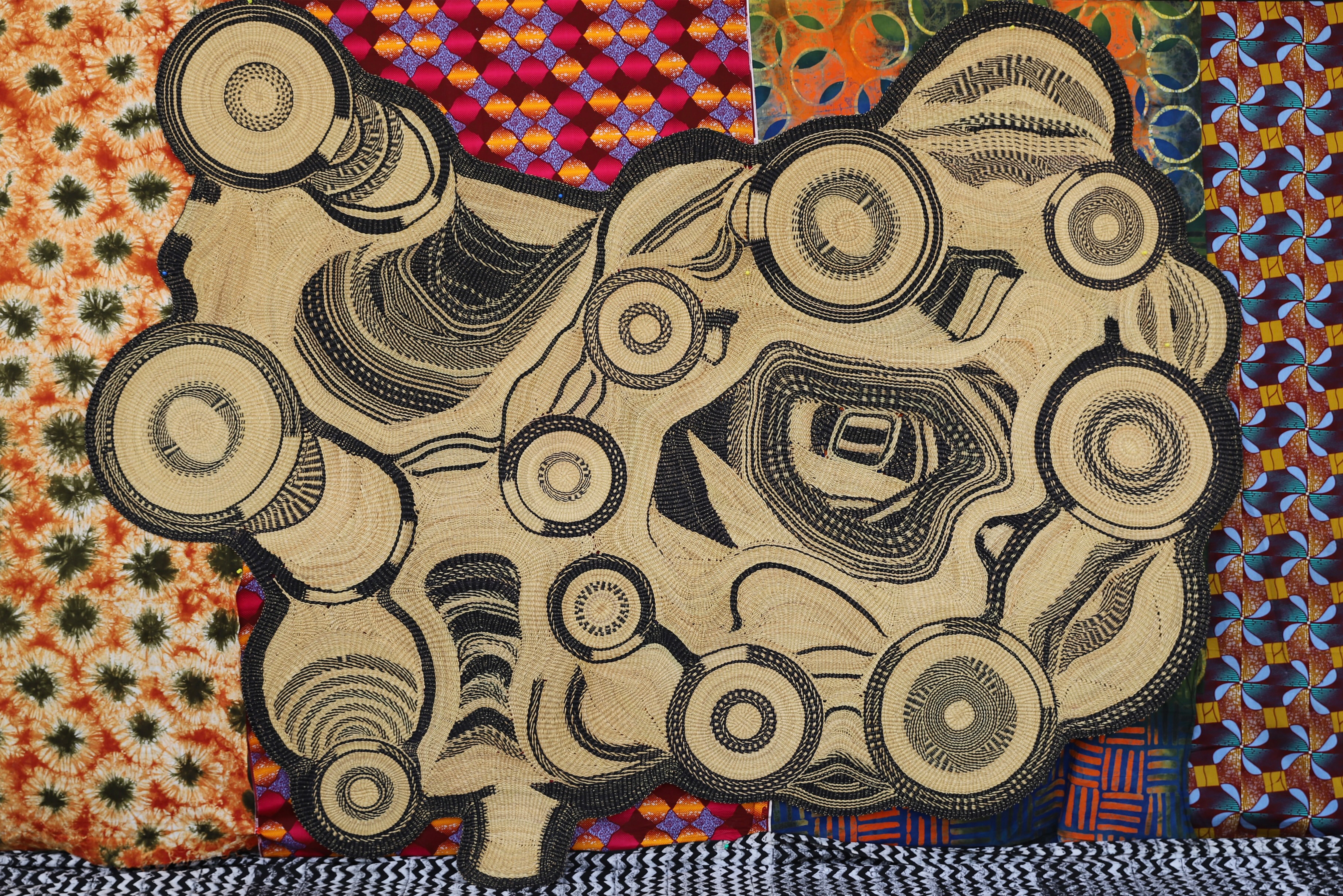
- Frafra tapestry number 1.
The Frafra Tapestry

Alvaro Catalán de Ocón states, "As a designer, I find it hard to justify an aesthetic decision; however, the Frafra Tapestry is based on an architectural plan interpreted by the artisans."
The Frafra Tapestry emerges from a prolonged research process. Each piece translates the architectural plan of a specific Frafra family compound, interpreted by local artisans by means of elephant grass. These are objective documents that precisely represent a construction tradition feared to disappear.
The traditional dense weaving extends in circles and lines that articulate the daily life of a family. Its growth is reflected in rooms, courtyards, and walls, captured in the tapestry as a poetic architectural plan.
The bicolor language articulates a compelling aesthetic message intended for contemplation in these large-format pieces.

- Drone view of a traditional building called Frafra family compound in northern Ghana.

- Each plan of the Frafra family compound, reflected in rooms, courtyards, and walls, were drawn up using AutoCAD.

- Each piece of Frafra Tapestry translates the architectural plan of a specific Frafra family compound, interpreted by local weavers by means of Elephant grass.

- The bicolor language of Frafra Tapestry articulates a compelling aesthetic message intended for contemplation in these large-format pieces.

- Bolgatanga weavers applied basketry techniques using Elephant grass in the tapestry's creation. This flexible and versatile fiber traced little by little the interconnected circles of the plan in a bicolor pattern.

- The Elephant grass is a flexible and versatile fiber traced little by little from the interconnected circles of the plan in a bicolor pattern.

- Mary Ayinbogra, weaver of Baba Tree Basket Company.

- Frafra tapestry number 1.
In the 1970s, Italian conceptual artist Alighero Boetti created the Map series, where a group of Afghan women wove multiple versions of a political world map. Boetti merely sent them the maps and country flags. The embroiderers interpreted the shapes and spaces through the aesthetic language of their tradition.
Like Boetti, Alvaro Catalán de Ocón does not impose a predefined project on his local partners. Returning to Ghana in 2022, the conversation resumed, stemming from the idea of an expansive lamp.
As Boetti said, dialogue involves chance. Each interaction triggers a dialectical impulse that sometimes leads to unexpected places. Thus, the concept of interconnected circles displayed by the Ramingining PET Lamp led to the Frafra family compounds.
These traditional buildings represent the local residential architectural model of Gurunsi. Built from adobe and wood, they house a family unit in circular structures, organically expanding as the family grows.
In Tongo Hills, a few kilometers from Bolgatanga, lives a priest of the animist religion. This area is home to numerous shrines forming the spiritual core of Gurunsi. This factor has been essential in preserving ancestral construction techniques.
The journey from abstract to concrete manifested itself in the priest's home through conversations and absorbing the family compounds and their significance. The architecture told the story of a family. What was left was just to weave it.
